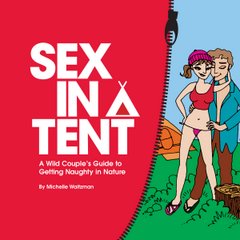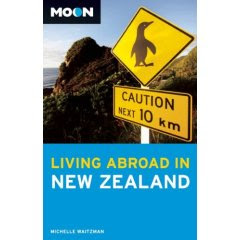
For those not familiar with
Chris Townsend, he is a UK author/photographer who has written
16 books on the outdoors. Chris is best known as a long-distance through-hiker. His major walks have included the Pacific Crest Trail, the Continental Divide Trail, and first-time continuous walks of the Canadian Rockies end-to-end, and the 517 Scottish Munros and Tops.
With all of these epic solo journies under his belt, it may surprise some people to hear that Chris has lived with his partner Denise for the past 12 years, while they first met over 30 years ago. Chris had a sneak peak at "Sex in a Tent" and agreed to chat with me about the joys and challenges of being an outdoor couple.
Was Denise experienced in the outdoors when you met? Was it part of what brought you together?
No, we met at a political meeting in a pub! We were both living in a big city at the time. Denise had a little experience of the outdoors but hadn't been wild camping or hill walking.
How did you introduce her to 'roughing it' without scaring her off? Were there any bad experiences at first?
Given how we were living 30 years ago going camping wasn't really "roughing it"! There were no bad experiences that I can remember.
On our first trip, which was in the English Lake District, I suggested a day walk from a campground up an easy hill as our first hike together. Denise found this rather tame - she liked scrambling, which she'd done on the coast - so for our second hike we went up a bigger mountain with some scrambling en route and bivvied out on the summit so we could watch the sunrise. That was our first wild camp!
Denise points out that the one bad experience she remembers was with packs, as this was before women's packs existed. None of the proper backpacks available at the time were comfortable and she ended up with a soft pack with added hipbelt, which was the best she could find. Women's packs made a huge difference to her.
What do you bring on your trips together than you don't bring on solo trips? Different gear? Food? Clothing?
All I remember taking that was different was a bigger tent and bigger pots.
Did you have different camping styles to begin with? Who has made compromises and what have they been?
I accepted that I'd walk less far than on my own (which applies to trips with friends as well).
What kinds of places do you like to go together? Is there a certain kind of>setting you consider more romantic for a camping trip with your partner?
We both like high camps in the Scottish Highlands, pitched near a lochan (small lake) in a corrie (bowl) backed by cliffs.
Have you shared any 'dream destinations' together? Or do you have places that you want to experience together?
I guess one dream destination is the Scottish Highlands - where we live!There are places we would like to experience together and which we hope it will be possible to visit.
What do you think couples can gain from exploring the wilderness together? What has it brought to your relationship?
I hope couples can gain an understanding both of themselves and the natural world and an appreciation of their place in it. Our shared appreciation of wild places has, I think, been deepened by wild camping. Being able to share my love of nature and wilderness with Denise is very important.
Do you behave any differently when the two of you are in the wild, compared to how you behave at home?
I don't think so. I do most of the cooking when we're in the wild!
Do you think you could be happy with a partner who wasn't comfortable in the wilderness?
No.
Would you ever consider going on a long-distance walk with Denise?
I would love to share the experience of a long walk with Denise. We are still hoping it will come about. (She currently has shoulder problems that make it impossible.)
 This month's Wilderness magazine carries a short article that makes a good follow-up to my recent post about the Tongariro Crossing. It seems that the Department of Conservation is looking for new ways to convince people not to take this hike too lightly.
This month's Wilderness magazine carries a short article that makes a good follow-up to my recent post about the Tongariro Crossing. It seems that the Department of Conservation is looking for new ways to convince people not to take this hike too lightly. Another option under consideration is allowing commercial guiding concessions on the track, as a way to ensure public safety. Of course that will only work if the people who are too inexperienced for the walk are aware that they need a guide - and most tourists unfortunately live in a state of denial about these things.
Another option under consideration is allowing commercial guiding concessions on the track, as a way to ensure public safety. Of course that will only work if the people who are too inexperienced for the walk are aware that they need a guide - and most tourists unfortunately live in a state of denial about these things.





 The endless stream of hikers on the Tongariro Crossing over Easter.
The endless stream of hikers on the Tongariro Crossing over Easter. The Tongariro Crossing on a spring weekend. You just never know!
The Tongariro Crossing on a spring weekend. You just never know! Be prepared, and enjoy the view!
Be prepared, and enjoy the view!






 Jay preparing some fresh, Alaskan salmon
Jay preparing some fresh, Alaskan salmon The top of Mt. McKinley (Denali) from the scenic flight I took. We saw a few climbers on the summit as we flew past.
The top of Mt. McKinley (Denali) from the scenic flight I took. We saw a few climbers on the summit as we flew past.  Exploring an old gold mine.
Exploring an old gold mine.





